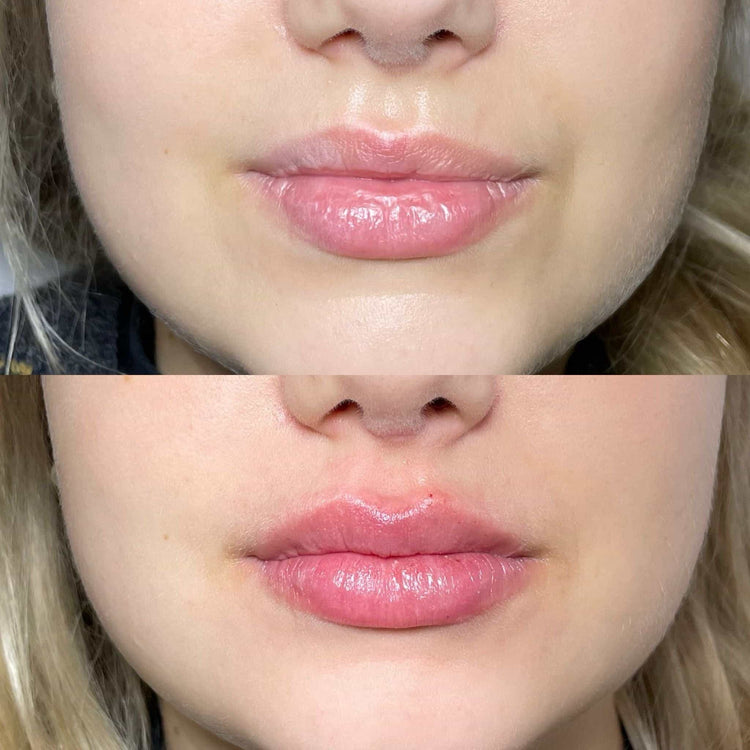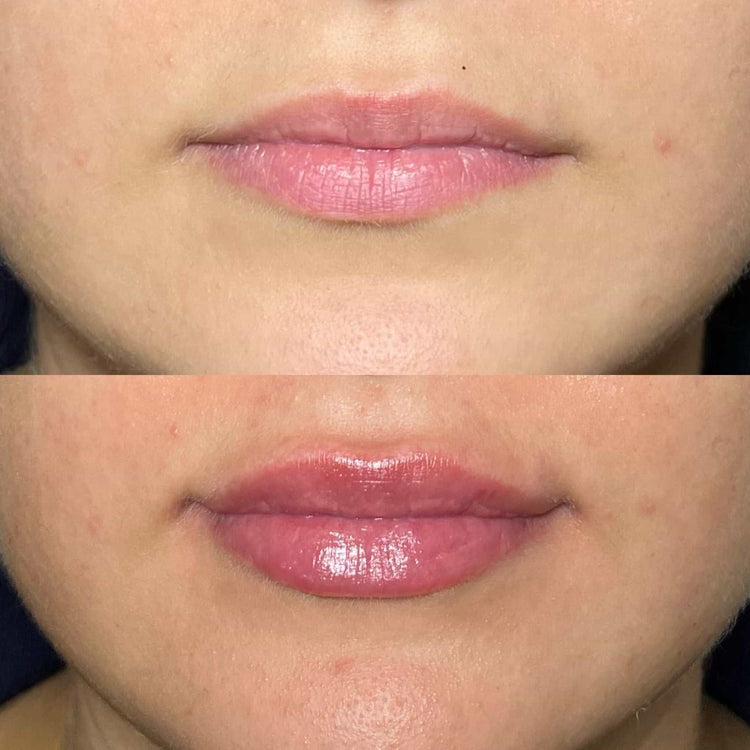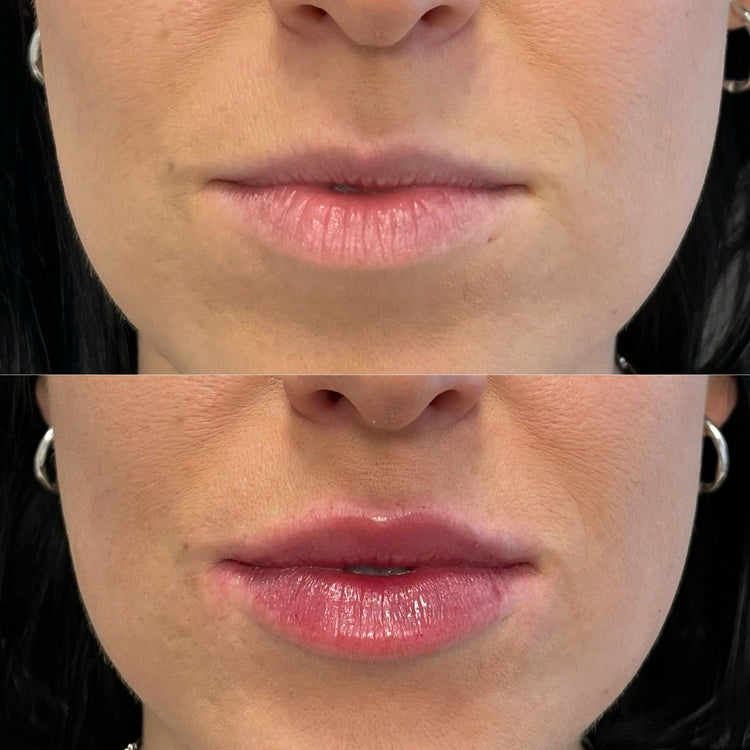Lip Injections In The UK: What To Expect
Types of Fillers
When considering lip injections, understanding the different types of fillers available is crucial. From hyaluronic acid gels to collagen stimulators, each type offers unique properties and results.
Hyaluronic Acid
Hyaluronic acid (HA) is a popular choice for lip injections in the UK. It’s a natural substance found in the body that attracts and holds water, giving skin its plumpness and hydration. HA fillers are injected into the lips to enhance their volume, shape, and definition. They are temporary, typically lasting 6 to 18 months, and can be dissolved if needed.
Poly-L-lactic Acid (PLLA)
Poly-L-lactic acid (PLLA) is a synthetic, biocompatible filler that works differently than hyaluronic acid.
Unlike HA, which adds immediate volume, PLLA stimulates the production of new collagen in the lips. This gradual process builds up collagen over time, leading to long-lasting enhancement and smoothing of wrinkles.
PLLA injections typically require multiple sessions spaced a few weeks apart to achieve optimal results. The final outcome may take several months to fully develop, providing a natural-looking lift and volume that can last for 12 to 18 months or longer.
Other Fillers
Polymethylmethacrylate (PMMA) is another type of filler used in lip augmentation.
This semi-permanent option provides long-lasting results, typically lasting several years. PMMA beads are injected into the lips to add volume and definition. While PMMA can deliver significant enhancement, it’s important to note that it is not as easily reversible as HA fillers.
Procedure
When undergoing lip injections in the UK, understanding the procedures involved is essential for informed decision-making. The type of filler used significantly impacts the results and longevity of the treatment.
Consultation and Planning
Lip injections in the UK involve a multi-step process that includes consultation, planning, and execution. Understanding each stage is crucial for achieving desired outcomes and ensuring a safe and successful experience.
- Consultation: The initial step involves a thorough consultation with a qualified practitioner who specializes in lip injections. During this meeting, the practitioner will discuss your aesthetic goals, assess your facial structure, medical history, and any allergies or sensitivities you may have. They will also explain different filler types, their properties, potential risks, and expected results.
- Planning: Based on the consultation, a personalized treatment plan will be developed. This involves determining the specific type of filler best suited for your needs, the amount required, and the injection points. The practitioner will guide you through the process, address any concerns you may have, and answer any questions you might have.
- Procedure: The actual lip injection procedure is typically performed in a sterile environment using local anesthetic to ensure comfort. The chosen filler is carefully injected into specific areas of the lips to enhance volume, shape, and definition. The practitioner will monitor the process closely and make adjustments as needed to achieve the desired aesthetic.
Injection Process
Lip injections in the UK involve a multi-step process that includes consultation, planning, and execution. Understanding each stage is crucial for achieving desired outcomes and ensuring a safe and successful experience.
- Consultation: The initial step involves a thorough consultation with a qualified practitioner who specializes in lip injections. During this meeting, the practitioner will discuss your aesthetic goals, assess your facial structure, medical history, and any allergies or sensitivities you may have. They will also explain different filler types, their properties, potential risks, and expected results.
- Planning: Based on the consultation, a personalized treatment plan will be developed. This involves determining the specific type of filler best suited for your needs, the amount required, and the injection points. The practitioner will guide you through the process, address any concerns you may have, and answer any questions you might have.
- Procedure: The actual lip injection procedure is typically performed in a sterile environment using local anesthetic to ensure comfort. The chosen filler is carefully injected into specific areas of the lips to enhance volume, shape, and definition. The practitioner will monitor the process closely and make adjustments as needed to achieve the desired aesthetic.
Recovery
Lip injections are a popular cosmetic procedure in the UK, offering a non-surgical way to enhance lip size, shape, and definition. There are several types of fillers used in lip injections, each with its own unique characteristics and longevity.
Initial Swelling and Discomfort
Recovery from lip injections is typically quick. Most people experience initial swelling and discomfort that subsides within a few days.
- It’s important to avoid touching or rubbing the treated area to prevent infection.
- Applying ice packs can help reduce swelling and minimize bruising.
- Over-the-counter pain relievers can be used to manage discomfort.
- It’s recommended to stay hydrated and avoid excessive sun exposure for at least a few days after the procedure.
Bruising
Bruising is a common side effect of lip injections, occurring as blood vessels are slightly injured during the injection process. Most bruising subsides within a week or two.
To minimize bruising, follow your practitioner’s post-procedure instructions carefully. These may include applying ice packs, avoiding strenuous activity, and refraining from touching or rubbing the treated area.
Return to Normal Activities
Recovery from lip injections is typically quick, with most people experiencing initial swelling and discomfort that subsides within a few days. To facilitate healing and minimize side effects, it’s important to follow your practitioner’s post-procedure instructions carefully.
This may include avoiding touching or rubbing the treated area to prevent infection, applying ice packs to reduce swelling and bruising, taking over-the-counter pain relievers for discomfort, staying hydrated, and avoiding excessive sun exposure for at least a few days.
While lip injections are generally considered safe, it’s important to be aware of potential side effects. Bruising is common and usually subsides within a week or two. Rarely, complications such as infection, allergic reactions, or uneven results can occur. If you experience any unusual symptoms or concerns after the procedure, contact your practitioner immediately.
After initial swelling subsides, you should be able to resume most of your normal activities. However, it’s best to avoid strenuous exercise, kissing, and using straws for a few days to minimize the risk of irritation or displacement of the filler.
Risks and Side Effects
Like any medical procedure, lip injections carry certain risks and potential side effects. It’s crucial to understand these beforehand to make an informed decision about treatment.

Infection
When considering lip injections, it’s essential to be aware of potential risks and side effects. While generally safe, complications can occur, such as infection, allergic reactions, or uneven results.
Infection is a rare but possible risk associated with any invasive procedure. To minimize this risk, ensure the practitioner uses sterile techniques and proper hygiene protocols.
Allergic reactions are also possible, though less common than with other cosmetic procedures. It’s crucial to disclose any allergies or sensitivities to your practitioner beforehand.
Uneven results can happen if the filler is not injected correctly or if individual lip anatomy varies. Choose a qualified and experienced practitioner to minimize this risk.
Allergic Reactions
Like any medical procedure, lip injections carry certain risks and potential side effects. It’s crucial to understand these beforehand to make an informed decision about treatment.
When considering lip injections, it’s essential to be aware of potential risks and side effects. While generally safe, complications can occur, such as infection, allergic reactions, or uneven results.
Infection is a rare but possible risk associated with any invasive procedure. To minimize this risk, ensure the practitioner uses sterile techniques and proper hygiene protocols.
Allergic reactions are also possible, though less common than with other cosmetic procedures. It’s crucial to disclose any allergies or sensitivities to your practitioner beforehand.
Uneven results can happen if the filler is not injected correctly or if individual lip anatomy varies. Choose a qualified and experienced practitioner to minimize this risk.
Asymmetry
Lip injections in the UK carry certain risks and potential side effects, which vary depending on individual factors and the type of filler used. Understanding these risks is essential for making an informed decision about treatment.
Bruising is a common side effect that typically resolves within a week or two. Swelling is also common and usually subsides within a few days.
Less common but more serious side effects include infection, allergic reactions, and uneven results. Infection can occur if proper sterilization techniques are not followed.
Allergic reactions may involve itching, redness, or swelling. It’s crucial to inform your practitioner about any allergies or sensitivities you have before the procedure.
Uneven results can arise from improper injection technique or individual anatomical variations. Choosing a qualified and experienced practitioner is essential for minimizing this risk.
Lumps or Nodules
Like any medical procedure, lip injections carry certain risks and potential side effects. It’s crucial to understand these beforehand to make an informed decision about treatment.
Common side effects include bruising, swelling, and tenderness at the injection site. These usually subside within a few days to a week.
More serious but less common side effects can include infection, allergic reactions, or uneven results.
Infection can occur if proper sterilization techniques are not followed. Allergic reactions may involve itching, redness, or swelling. It’s important to inform your practitioner about any allergies or sensitivities you have before the procedure.
Uneven results can occur due to improper injection technique or individual anatomical variations. Choosing a qualified and experienced practitioner is essential for minimizing this risk.
Aftercare Instructions
Aftercare instructions are crucial for ensuring optimal results and minimizing potential complications from lip injections.
Cleaning and Hygiene

Following your practitioner’s post-treatment instructions carefully is vital for successful healing and achieving the desired outcome.
Generally, you’ll be advised to avoid touching or rubbing the treated area to prevent infection and promote proper healing. Applying ice packs can help reduce swelling and minimize bruising.
Over-the-counter pain relievers may be recommended for discomfort, but it’s best to consult your practitioner before taking any medications.
Staying hydrated is important for tissue repair and overall recovery.
You should also avoid activities that could lead to trauma or pressure on the lips, such as strenuous exercise, kissing, and using straws, for a few days post-procedure.
Exposure to direct sunlight should be minimized to prevent further irritation and potential discoloration.
Avoiding Certain Activities
Aftercare instructions are crucial for ensuring optimal results and minimizing potential complications from lip injections.
Following your practitioner’s post-treatment instructions carefully is vital for successful healing and achieving the desired outcome.
Generally, you’ll be advised to avoid touching or rubbing the treated area to prevent infection and promote proper healing. Applying ice packs can help reduce swelling and minimize bruising.
Over-the-counter pain relievers may be recommended for discomfort, but it’s best to consult your practitioner before taking any medications.
Staying hydrated is important for tissue repair and overall recovery.
You should also avoid activities that could lead to trauma or pressure on the lips, such as strenuous exercise, kissing, and using straws, for a few days post-procedure.
Exposure to direct sunlight should be minimized to prevent further irritation and potential discoloration.
To ensure optimal results and minimize risks, avoid certain activities after lip injections:
- Strenuous Exercise: Intense workouts can increase blood flow to the face, potentially causing swelling or displacement of the filler.
- Kissing:**
- Using Straws:** Suction from straws can pull on the filler and cause it to move out of place.
- Touching or Rubbing Lips: Frequent touching can irritate the injection sites and increase the risk of infection.
- Sun Exposure: Avoid direct sunlight or tanning beds, as UV rays can damage the skin and affect the filler’s longevity.
Applying pressure to the lips during kissing can distort the filler and lead to uneven results.
Cost and Financing
The cost of lip injections in the UK varies depending on several factors, including the type and amount of filler used, the practitioner’s experience and location, and the number of treatment sessions required.
On average, expect to pay anywhere from £200 to £600 per session for lip augmentation.
Some clinics may offer package deals or discounts for multiple treatments.
Financing options may also be available through some providers, allowing you to spread the cost of treatment over several installments.
It’s always best to discuss payment options and potential financing plans with your chosen practitioner before proceeding with treatment.
Finding a Qualified Practitioner
Finding a qualified practitioner is essential for safe and successful lip injections. Look for a doctor, nurse, or other licensed medical professional who specializes in injectables and has extensive experience with lip augmentation.
Check their credentials, reviews, and before-and-after photos to assess their expertise and track record. Don’t hesitate to ask about their training, qualifications, and the specific type of fillers they use. Ensure they prioritize patient safety and provide a comfortable and welcoming environment. Consulting with multiple practitioners can help you find the best fit for your needs and preferences.
Alternatives to Lip Injections
Alternatives to lip injections include using over-the-line lip plumping products like balms or glosses that contain ingredients like hyaluronic acid, peptides, or menthol. These products temporarily increase lip volume by attracting moisture and creating a plumping effect.
Another option is using natural remedies, such as applying a warm compress to the lips for a few minutes to increase blood flow and temporarily enhance fullness. Honey can also be applied to hydrate and plump the lips.
For a longer-lasting result than topical options but without the invasiveness of injections, lip fillers that are absorbed by the skin over time may be an option. These are generally made from ingredients like hyaluronic acid or collagen and can provide subtle volume enhancement for several months.
Consider your desired level of enhancement and budget when choosing an alternative to lip injections. While these options may not provide the dramatic results of injections, they offer gentler approaches for achieving fuller lips.
Enquire today about lip injections and fillers with Dr. Laura Geige at It’s Me & You Clinic
- Profhilo Treatment Near Banstead, Surrey - October 25, 2025
- Light Eyes Ultra – Dark Circles Treatment Near Ewhurst, Surrey - September 3, 2025
- Labiomental Crease Filler – Chin Crease Treatment Near Chiddingfold, Surrey - September 2, 2025

